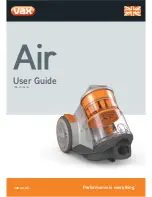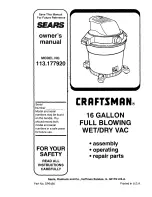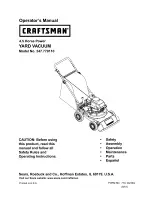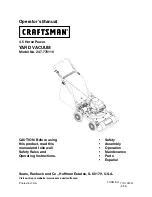
29
4. Dry Vacuuming
WARNING!
For dry vacuuming, always use at least one of the supplied filters for dry
vacuuming.
Filtration for dry vacuuming can vary according to the method of use. Three filters for
dry vacuuming are included: a paper filtration bag, a HEPA filter and a fabric filtration bag.
For interior vacuuming or vacuuming of fine dust, use the paper filtration bag or the
HEPA filter. The best filtration is achieved by combining the paper filtration bag and the
HEPA filter.
For vacuuming of coarse dirt or e.g. after working in a workshop or outside, use the
fabric filtration bag.
Filtration bags or the HEPA filter must be completely dry when vacuuming dry dust since
a wet or damp bag gets clogged soon and its cleaning is difficult. Carefully and regularly
check the filtration bags and the HEPA filter for damages. Never use them if they are pierced
or ruptured, otherwise,
such conditions may result in motor damaging and warranty
voidance.
1.
Make sure that the equipment is disconnected from the power supply.
2.
Attach the paper bag opening to the suction throat of the vacuum cleaner. Start from
the throat bottom and continue upwards. Push the suction throat completely into the
bag. See Fig. 1.
2a.
The fabric bag is to be attached to the filtration basket. Pull the bag up to the filtration
basket throat and make sure that there is no gap that would enable the dust to enter
the motor.
See Fig. 2.
2b.
The HEPA filter is to be attached to the filtration basket. After attaching, the filter must
be secured with a safety cover. The filter attachment must fit with the safety cover
groove. See Fig. 3.
3.
Re
-
install the upper part back to the tank and fasten it in place.
4.
Insert the larger end of the plastic hose to the front inlet in the tank and secure it.
Attach the requested attachment to the free end of the hose.
5.
Connect the plug to the socket.
6.
Turn the switch to Position I
-
only vacuuming.
After you finish vacuuming, turn the switch to Position “OFF” (“O”), and disconnect the
plug from the socket.
















































